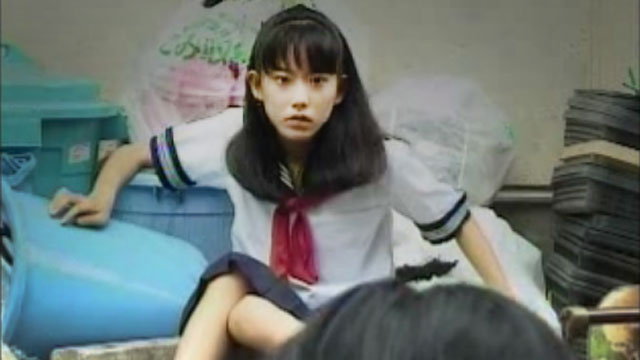By the ’90s, American horror had lost anything that even resembled frights. Film after film featuring anonymous guys wearing masks macheting equally anonymous teens had given way to self-aware films featuring anonymous guys wearing masks macheting yet more anonymous teens. It was time for something different, something actually creepy. That something was J-Horror, a Japanese movement (accompanied by K-Horror out of Korea) that introduced the y?rei, the long haired female ghost, to the West. It also brought a real sense of unease, that there were things in the universe that we could never understand and they weren’t friendly.
After Ringu, which is credited with kicking things off, Takashi Shimizu’s Ju-On movies are the most important and popular J-Horror works. They add hopelessness and desolation to the mix. In each of the seven films (Ju-On: The Curse 1 & 2, Ju-On: The Grudge 1, 2, & 3, and the American remakes, The Grudge 1 & 2), all directed by Shimizu, innocent, everyday people confront a curse, formed from the rage inherent in an act of extreme cruelty and betrayal, and there is nothing they can do but die. There’s no answer.
In general, I enjoy films where we follow protagonists that accomplish relevant goals, but those aren’t scary movies; the Ju-Ons are. I screened the original The Curse films for an audience of about a hundred and fifty and spent the next day listening to how I had brought them nightmares and how they didn’t feel comfortable being alone. Now that’s horror. The latter films lost some of that edge, but that’s par for the course with any series. Before Ju-On, there was Katasumi (In a Corner) and its sibling, 444-444-4444. Shimizu’s career was just starting in 1998. He was signed on to create two segments for an anthology movie, Gakkô no kaidan G (School Ghost Stories G), but as the producers weren’t convinced of his skills, each had to be under five minutes. He used this time effectively, laying the foundation for his features. Though lacking the flair of the longer pictures, the two vignettes successful convey the same feeling of doom. The more complex Katasumi presents two school girls, wearily completing the chore of feeding their class’s pet rabbit. When one cuts her finger, the other leaves to get a bandage. It’s never good to be left alone in a horror film, even a very short one, and that’s true here. When the absent girl returns, she finds the cages ripped open and her friend missing. Unfortunately for her, she learns the one thing worse than being alone is abruptly discovering you’re not alone. In 444-444-4444, a teenager finds a ringing cell phone and answers it. All he hears on the other end is the mewing of a cat. When he demands to know who is playing a trick on him, he gets his answer from an uncomfortably close source. Katasumi and 444-444-4444 aren’t terrifying on their own, but are vital pieces in the unsolvable Ju-On puzzle.